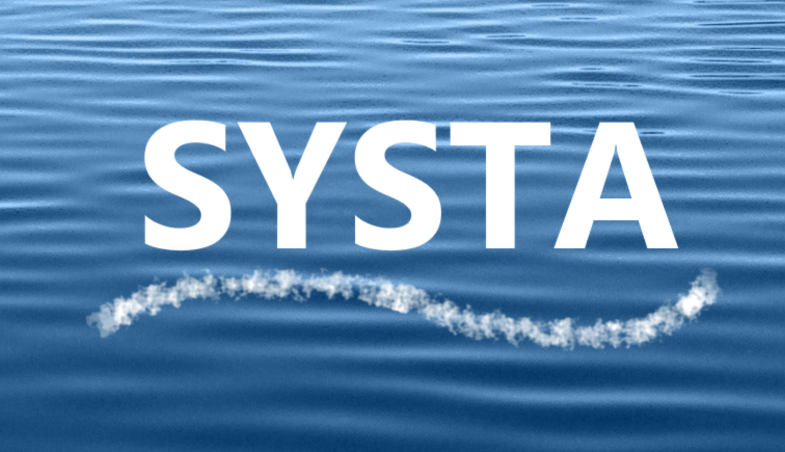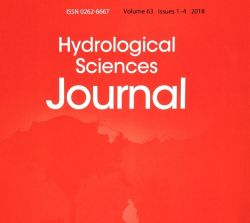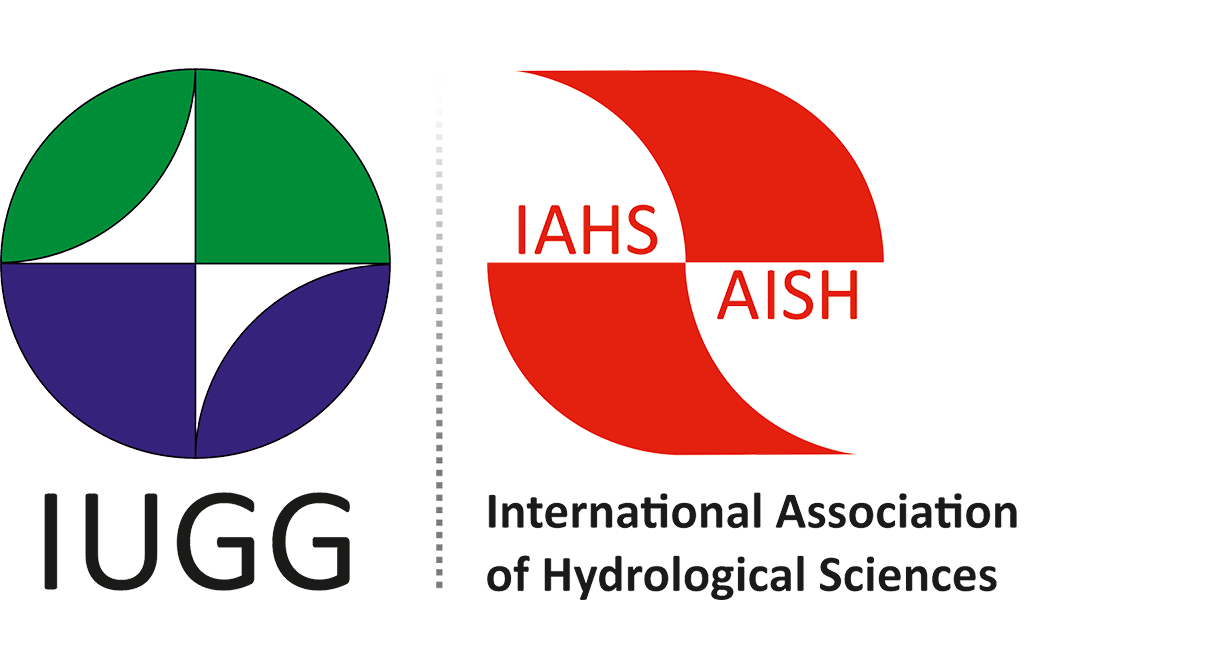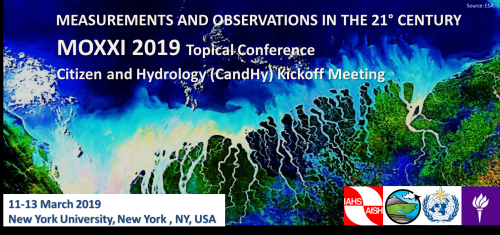IAHS News
IAHS Early Career Committee Outcome of evaluation
The open call for applications attracted 60 early career scientists. There were many high-quality applications from around the world. A comprehensive and detailed review was carried out by the IAHS Commissions and IAHS Bureau, considering diverse composition in terms of gender and geography. Below are the selected members of the IAHS ECC, each representing one IAHS Commission.
| Commission | ECC Member | Gender | Career Stage | Country |
| ICCE | Joris Eekhout | male | Post-doc | Spain |
| ICCLAS | Tirthankar Roy | male | Post-doc | USA |
| ICGW | Michelle Newcomer | female | Post-doc | USA |
| ICRS | Kartic Bera | male | Post-doc | India |
| ICSH | Svenja Fischer | female | Post-doc | Germany |
| ICSIH | Elzbieta Czyzowska-Wisniewski | female | Post-doc | USA |
| ICSW | Honeyeh Iravani | female | PhD | UK |
| ICT | Giovanny Mosquera | male | PhD | Ecuador |
| ICWQ | Jean Nepomuscene Namugize | male | PhD | Rwanda |
| ICWRS | Gokcen Uysal | male | Post-doc | Turkey |
The ECC is a two-year mandate. The first mandate will officially come into force from July 2019 at the 27th IUGG General Assembly (in Montreal, Canada http://iugg2019montreal.com/) and run until July 2021, when the next ECC will take over at the IAHS Scientific Assembly in Montpellier, France.
For an efficient inception, the ECC will get to work immediately! Their first task will be to organize activities for the upcoming IAHS symposia to be held as part of the 27th IUGG GA in Montreal, Canada.
We wish the IAHS ECC great success and look forward to working together!
27th IUGG Assembly, Montreal Travel Support: IAHS SYSTA & IUGG Grants
The 27th IUGG General Assembly will be held July 8-18, 2019 at the Palais des Congrès in Montréal, Québec, Canada. Abstract submission, online registration and accommodation reservation are now open on the website: http://iugg2019montreal.com/.
The IAHS programme will be over the first half of the Assembly ie 9-14 July 2019.
Financial support is now available as travel grants both:
through the IUGG assembly website http://iugg2019montreal.com/travel-grant.html
and through the IAHS website https://iahs.info/About-IAHS/SYSTA.do

Launched in 2018, IAHS SYSTA awards are available to eligible early career scientists from financially disadvantaged countries attending IAHS events.
The “Sivapalan Young Scientists Travel Award” is named in recognition of the hydrologist M. Sivapalan and based on the following considerations:
- M. Sivapalan is a world leading scientist who has invigorated the hydrological sciences within IAHS through spearheading the Prediction in Ungauged Basins (PUB) and other initiatives.
- M. Sivapalan is the perfect role model for young scientists as he has shown to the world how somebody from a financially disadvantaged country can indeed advance to the top.
Applications for an IAHS SYSTA award will be considered from scientists that meet ALL of the following criteria:
- They grew up and now reside in a financially disadvantaged country
- They completed their PhD less than 5 years ago (an extra year per child is allowed for parents if they took parental leave)
- There is evidence of their high quality/high potential as a scientist in the form of a paper of which they are first author in Hydrological Sciences Journal (HSJ) or Proceedings of the International Association of Hydrological Sciences (PIAHS) (or in another listed hydrological journal)
- They have not previously received a SYSTA award for intercontinental travel.
The award is limited to a maximum of €2000 per individual covering registration fee, visa fee (if necessary), accommodation and transport. Applications can be made in English or French via the IAHS website https://iahs.info/About-IAHS/SYSTA.do .
The deadline for applications for an IAHS SYSTA award for the assembly is Friday 30 November 2018 at 12 noon GMT.
International Hydrology Prize – Call for nominations before 31st December 2018
Nominations for the Prize are made by National Committees to IAHS, National Committees to the UNESCO-IHP or National Hydrological Advisors to the WMO, and forwarded to the Secretary General of IAHS for consideration by the Nomination Committee. The Committee consists of the President and a Vice-President of IAHS and representatives of UNESCO and WMO.
Two medals are awarded under the International Hydrology Prize: the Dooge medal and the Volker medal. Both medals are intended to distinguish outstanding achievements by hydrological scientists but with a different focus. The Dooge medal is aimed at fundamental contributions to the science of hydrology, whereas the Volker medal is aimed at outstanding applications of hydrological science for the benefit of society at large.
The following applies to both the Dooge and Volker medals:
- The International Hydrology Prize shall be awarded to persons who have made outstanding contributions to hydrology such as confers on the candidate universal recognition of his or her international stature.
- The contribution should have an identifiable international dimension extending beyond both the country of normal work and the specific field of interest of the candidate.
- The medals may be awarded to hydrologists of long international standing or to younger but active hydrologists who exhibit qualities of international leadership in the science or practice of hydrology.
- An active involvement in the work of IAHS and other international organizations in the field of hydrology should be counted as an advantage.
Specific considerations for the Dooge medal:
- The Dooge medal is particularly intended for hydrologists who have demonstrated scientific excellence, and have made fundamental contributions to the science of hydrology as evidenced by publications in the international scientific literature and other evidence of high standard.
- Preference should be given to candidates who have recently exhibited outstanding international leadership in the science of hydrology.
Specific considerations for the Volker medal:
- The Volker medal is dedicated for hydrologists who have applied their research and hydrological expertise to the benefit of society, addressing issues of public interest and development.
- Applications of hydrology to the benefit of developing countries would count as an advantage.
- Preference should be given to candidates who have contributed through both scientific and practical work, and who have made outstanding contributions to the Hydrology community as demonstrated by active involvement in the work of IAHS or other international hydrological associations.
Nomination format and procedure
Nominations should be received by the Secretary General of IAHS no later than 31 December 2018 – Christophe Cudennec at [email protected] – and consist of:
- a (max. 2, pages A4 format) nomination letter signed by a National Representative to IAHS, the President of a national committee of UNESCO-IHP, or a National Hydrological Advisor to the WMO, with one sentence citation (max. 200 characters), and stating why the nominee is the most qualified person to receive the Volker or Dooge medal, paying attention to the medal's dedication specified above;
- the nominee’s CV (max. 3 pages, A4 format) with an emphasis on the contribution to hydrological science and international scientific cooperation, providing clear information on the main criteria used for the evaluation and the specific considerations mentioned above.
- a list of the major scientific publications (max. 2 pages, A4 format).
Nominations are expected from the world diversity, and equally for female and male candidates.
Evaluation criteria:
a) Outstanding contributions to hydrology evidenced by universal recognition of his or her international stature.
b) Identifiable contributions with international dimensions extending beyond both the country of normal work and the specific field of interest of the candidate.
c) For senior candidates prove of Hydrologists activities of long international standing, or for younger candidates, prove of being active hydrologists with qualities of international leadership in the science or practice of hydrology.
d) Active involvement in the work of IAHS and other international organizations in the field of hydrology is counted as an advantage.
e) Application of the hydrological research performed and the use of his/her expertise to the benefit of society and addressing issues of public interest and development.
f) Applications of hydrology to the benefit of developing countries counts as an advantage.
HSJ Special Issue on Hydrological Data: Opportunities and Barriers submission extended
We confirm that the submission deadline for the Hydrological Sciences Journal Special Issue on 'Hydrological Data: Opportunities and Barriers' has been extended to 31st March 2019.
Data issues were, are, and will remain a core component of the hydrological sciences. Their character and influence on the way the discipline is practiced may vary through time, but their intrinsic role in understanding and managing water resources, as well as in developing sound water policies dictates their continuing importance. Whereas the primary data issues during much of the twentieth century focused on establishing and maintaining in situ observing networks to provide a sound basis for understanding and predicting the quantity and quality of the resource, both on the surface and in the ground, today’s concern encompasses a much broader suite of problems.
To elevate and expand the discussion of the critical role of data in all aspects of the hydrological sciences, a Special Issue of the Hydrological Sciences Journal entitled “Hydrological Data: Opportunities and Barriers” is being planned for publication. Articles are currently being sought on all aspects of data in hydrology; from traditional concerns related to networks to more contemporary thinking about simple, low cost innovations in instrumentation, data management and exchange protocols, and big data, as in large-scale multi-model ensembles spanning long time periods. Numerous emerging activities and topics provide a substantial source of potential contributions.
We strongly encourage potential authors to contact first the Managing Guest Editor, Christophe Cudennec to inquire about the suitability of their manuscript and about any innovative concept.
Full details of the special issue can be found on the Taylor & Francis website at:
http://explore.tandfonline.com/cfp/est/hydrological-science-data?utm_source=CPB&utm_medium=cms&utm_campaign=JMR05075
27th IUGG General Assembly Announcement

"Beyond 100: The next century in Earth and Space Science"
The 27th IUGG General Assembly will be held July 8-18, 2019 at the Palais des Congrès in Montréal, Québec, Canada. This is a special opportunity for participants from around the world to come together and share their science and culture. 2019 marks the 100th anniversary of IUGG; we will look back on the accomplishments of the previous century of Earth and space science research, and forward to the next century of scientific advancement. Join us for a host of scientific activities, including special public lectures, keynote Union lectures and a wide variety of themed sessions.
Abstract submission, online registration and accommodation reservation are all now open on the website: http://iugg2019montreal.com/.
The IAHS programme will be over the first half of the Assembly ie 9-14 July 2019.
Details of the IAHS symposia can be found here:
IAHS stand alone symposia - http://iugg2019montreal.com/h.html
Inter-Association symposia:
IAGA, IACS, IAG, IAHS, IAMAS, IAPSO, IASPEI, IAVCEI - http://iugg2019montreal.com/ja.html
IACS, IAHS, IAMAS, IAPSO, IAVCEI, IAPSO - http://iugg2019montreal.com/jc.html
IAHS, IAMAS, IAG - http://iugg2019montreal.com/jh.html
IAMAS, IAHS, IACS - http://iugg2019montreal.com/jm.html
IAPSO, IACS, IAGA, IAHS, IAMAS, IAG, IASPEI, IAVCEI -http://iugg2019montreal.com/jp.html
IASPEI, IACS, IAG, IAHS - http://iugg2019montreal.com/js.html
We look forward to welcoming you to Montréal in 2019. Please sign up on the main web page if you would like to receive newsletters and updates for the conference.
Quick links:
Program overview and symposia details: http://iugg2019montreal.com/iugg-program.html
Registration and housing reservation: http://iugg2019montreal.com/register.html
Abstract submission: http://iugg2019montreal.com/abstract-submission.html
Submission of a travel grant application http://iugg2019montreal.com/travel-grant.html
For additional information, please contact [email protected]
2019 MOXXI, CandHy, WMO HydroHub, and CUAHSI Joint Conference
Innovation in Hydrometry: Overcoming barriers to operationalization
The MOXXI 2019 International Conference will be hosted at New York University (Kimmel Center, 60 Washington Sq. South Suite 605, New York, NY 10012) from March 11th to 13th in collaboration with the Citizen AND Hydrology (CandHy) working group of IAHS, the World Meteorological Organization (WMO) HydroHub, and the Consortium of Universities for the Advancement of Hydrologic Science, Inc. (CUAHSI).
The conference aims to bring together different researchers, users, and instrumentation developers to discuss how to overcome the barriers to the advancement of hydrological observations and to the operationalization of innovative hydrometric technologies and monitoring approaches. The event will provide a forum for sharing the latest developments in fields such as sensor technology, information systems, participatory monitoring and consideration of the key challenges faced by those delivering operational hydrometric monitoring services in the public and private sector.
The conference welcomes contributions from practitioners, innovators, data managers and assimilators, as well as researchers in hydrology and other fields. Contributions by experts from National Meteorological and Hydrological Services are particularly welcome.
Further information is available on the IAHS MOXXI page: https://iahs.info/Commissions--W-Groups/Working-Groups/MOXXI/Information/MOXXI-2019.do
IAHS launch new travel award
SYSTA awards are available to eligible early career scientists attending IAHS events and who grew up and now reside in a financially disadvantaged country. Typically IAHS intends to make around 20 awards per year.
The first IAHS meeting for which SYSTA support is available will be the 27th IUGG Assembly in July 2019 in Montreal, Canada. The deadline for applications for support for the 2019 IUGG Assembly is Tuesday 13 November 2018 at 12 noon GMT.
Applications can be made in English or French.
The award will be limited to a maximum of €2000 per individual covering registration fee, visa fee (if necessary), accommodation and transport.
Full details of the award and the application procedure can be found at https://iahs.info/About-IAHS/SYSTA.do
IAHS signs new Memoranda of Understanding
The agreements recognise that a closer relationship between the organisations can foster international exchange in hydrological research and learning and promote international opporunties in hydrology for members.
The organisations will promote the following activities:
- an exchange of information and possible co-organization or reciprocal support to research initiatives and programs;
- an exchange of information and possible co-organization of scientific conferences and workshops;
- an exchange of information and possible joint activities concerning educational opportunities, student programs, and professional services;
- an expansion of membership of both organizations through networking activities and possible joint programs.
Full information is available in the attached memoranda.
 IAHS-AGU MOU |
 IAHS-EGU MOU |
These agreements build on the success of the cooperation in southern Africa with WaterNet https://iahs.info/News/News-Archive/2016-News.do?news_id=164
Second Call for Papers - 3rd IAHS Panta Rhei Conference
Delegates are invited from the entire global community with interest in sharing experiences on hydrological contribution to societal well-being with particular focus on developing countries. Relevant papers and posters are invited from the entire IAHS community for the conference entitled 'International Conference on Enhanced Hydrological Understanding for a Better Society'.
The Conference has been designed to cover four topical themes – Water secure cities, water-food-energy nexus, adaptive water governance and hydrological uncertainty.
KEY TIMELINES
| 30 July 2018 | First announcement of conference information |
| 21 August 2018 | Second announcement of conference information |
| 31 August 2018 | Deadline for receiving abstracts Deadline for receiving registration forms |
| 15 September 2018 | Last announcement with detailed conference information |
| 25-26 October 2018 | Workshop |
| 27 October 2018 | Field trip |
Conference Information and Registration Form
STAHY 2018 Spring School
Thank you for your interest in STAHY-2018 in Adelaide Australia.
As noted on the website, we are planning to hold a Spring School in association with the STAHY workshop.
We plan for the Spring School to take place over 2 days, on the campus of the University of Adelaide (in the Adelaide city centre). The following broad themes will be covered:
Day 1 - Model development and calibration in hydrology
Day 2 - Uncertainty estimation in hydrological modelling
The lectures will be delivered in an informal settings to encourage interaction and discussion, and will be delivered by Mark Thyer, David McInerney and Dmitri Kavetski.
The technical level will best suit research students (Masters and PhDs), as well as industry colleagues interested in research approaches.
In order to better understand person’s availability / level of interest, and help us optimise the schedule, could you please indicate your broad availability using the following Doodle poll https://doodle.com/poll/vb3crc9dtvxakt4k
Note that the Spring School will have a fee of AUD 100 in order to cover the basic running costs. This fee is separate from the STAHY registration fee, which covers the 3 STAHY workshop days (24-26 Sept).
For more information, or to keep up to date with STAHY 2018, visit https://www.stahy2018.org/
Kind regards,
Dmitri Kavetski and Mark Thyer,
on behalf of the local organising committee

